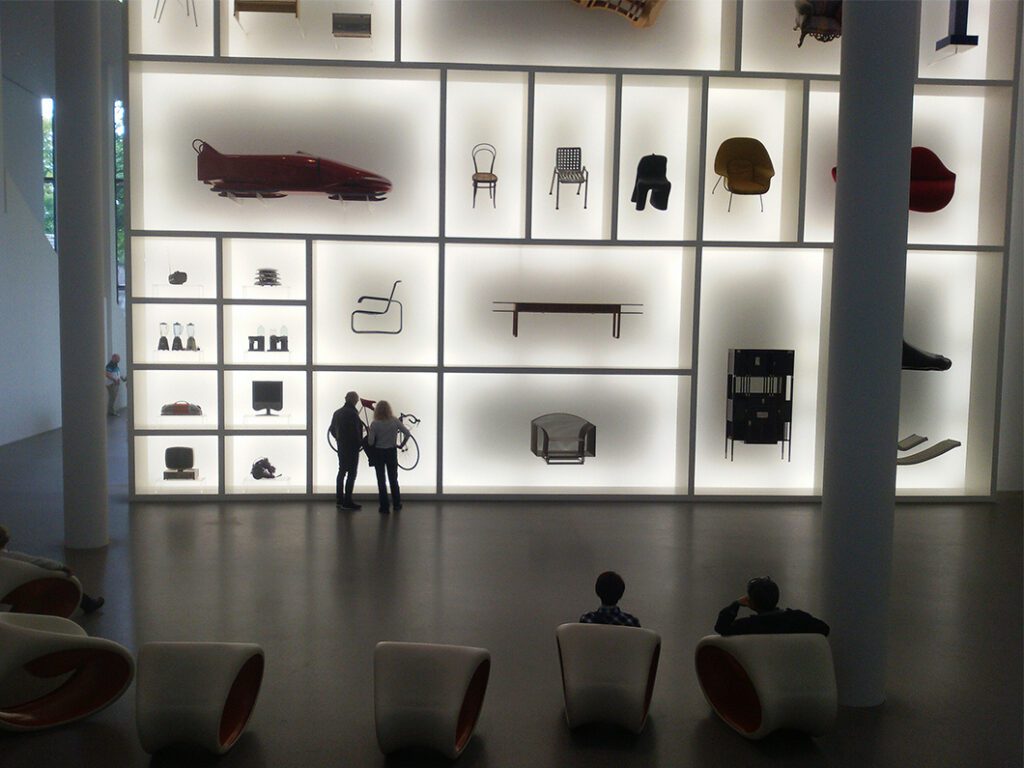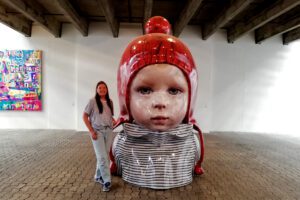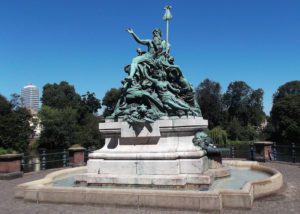Munich, the capital of the federal state of Bavaria, stands, of course, for the famous beer and Oktoberfest and is the epitome of Germany.

(Photo: Nicknicknick97, München Marienplatz , CC BY-SA 4.0)
Since Munich also has Germany’s second-largest airport – after Frankfurt – chances are that you have a stopover here.
With about 1.5 million inhabitants, Munich is Germany’s third-largest city – after Berlin and Hamburg and, consequently, a great gateway for trips to many idyllic lakes and mountains. But even the city center has a rather cozy feel to it – with parks and greeneries, the river Isar, many historic buildings, and fantastic museums.
If you have a layover of at least six hours, make the most of it by taking a quick ride by commuter train into the city center. This guide will lead you to the most interesting and iconic places – whether rain or shine.
In case your layover is too short to squeeze in a day trip downtown – no problem, just come back for a city break.
However, this way, you’ll have enough time to explore all the points of interest listed in this mini-guide to Munich.
 Local Currency
Local Currency
Euro (EUR) / 1 EUR = 1.16 US$ as of July 2025 / current rate
 Emergency Contacts
Emergency Contacts
Police 110 / Fire Department 112
 National Airline
National Airline
 Airports
Airports
Munich Airport / IATA-Code MUC
 Tourist Info Online and Onsite
Tourist Info Online and Onsite
Tourismusinformation München
Marienplatz 8
80331 München
Telephone + 49 – 89 – 233 96 500
 Getting Downtown and Back
Getting Downtown and Back
Although the trip from the airport takes about an hour, getting to the city center and back is pretty easy. To the main station, you can either take the Lufthansa Express Bus that leaves every 15 minutes and costs €uro 10,50 one way, or you opt for the so-called S-Bahn, the regional train, that takes you there for 11,60 €uro.
However, if you intend to use public transportation more often – and that would be only once more – a day ticket for 13 €uros is recommendable, obviously; especially if you’re going back to the airport the same day. For parties of two to five people, there is an even more economical group ticket for 24,30 €uro – now, if that’s not a great bargain, I don’t know what is.
If you have luggage, you can store it in the lockers at the main station.
 Morning Activities
Morning Activities
Munich is one of Germany’s Southernmost points and deems especially in Summer almost a bit Mediterranean.
The bars and restaurants have their terraces open, people are strolling, flashing their latest, most exclusive fashion. Mind you, Munich is one of Germany’s wealthiest cities – and the inhabitants, obviously, are not shy about flashing their cash.
The train station is just minutes away from the city center and the main shopping district. So as you exit to the Bahnhofsplatz and walk down the Schützenstraße to the Karlsplatz, you’ll get to Munich’s main square. In fact, everybody here calls it Stachus after the pub called Beim Stachus….which sadly doesn’t exist any longer.
Walking through the Karlstor, Charles Gate, you’ll get to the main shopping street Neuhauser Straße, which has a lot to offer – besides countless stores.
From Square to Square
Basically, you’ll find all the eateries serving heavy Bavarian food on the right side of the street and the places of historic interest to the left – albeit I don’t think this was actually a concept.
Passing Oberpollinger, a traditional – hence not exactly cheap – department store, you’ll get to the Bürgersaal, Citizen’s Hall, built in baroque style in the 18th century and also referred to as Bürgersaalkirche since it serves as the prayer and meeting room of the Marian Men Congregation “Annunciation”.
Just a couple of steps further is the beautiful St. Michael Kirche, Saint Michael’s Church.
This church was built end of the 16th century in the transition era between the Renaissance and the Baroque and was foreseen to serve as Wittelsbach’s final resting place. Although there are graves at various other churches around Munich, i.a. at the Frauenkirche, this one is the most important – there are almost 40 members buried here, for instance, famous’n’flamboyant Ludwig II, patron of Schwanenstein castle.
The Frauenkirche – An Icon
Around the corner, left on Augustinerstraße, you’ll spot Munich’s most iconic landmark, the Frauenkirche, Church of our Lady. Obviously, this house of worship serves as the cathedral of the Archdiocese of Munich and Freising and is the Archbishop’s seat. Sanctified already in 1494, the two towers with the characteristic Welsh cap-like towers were added only in 1525.
Usually, it is possible to climb up the south tower to get a spectacular view of Munich. Unfortunately, currently, it’s being renovated.
Walking back to the main street – which at this height is named Kaufingerstraße – you’ll soon reach the Marienplatz with Mary overlooking the crowds from her column.
Marienplatz
The square is dominated by the town hall – the new town hall, to be precise; the third and last building period was finished in 1905.
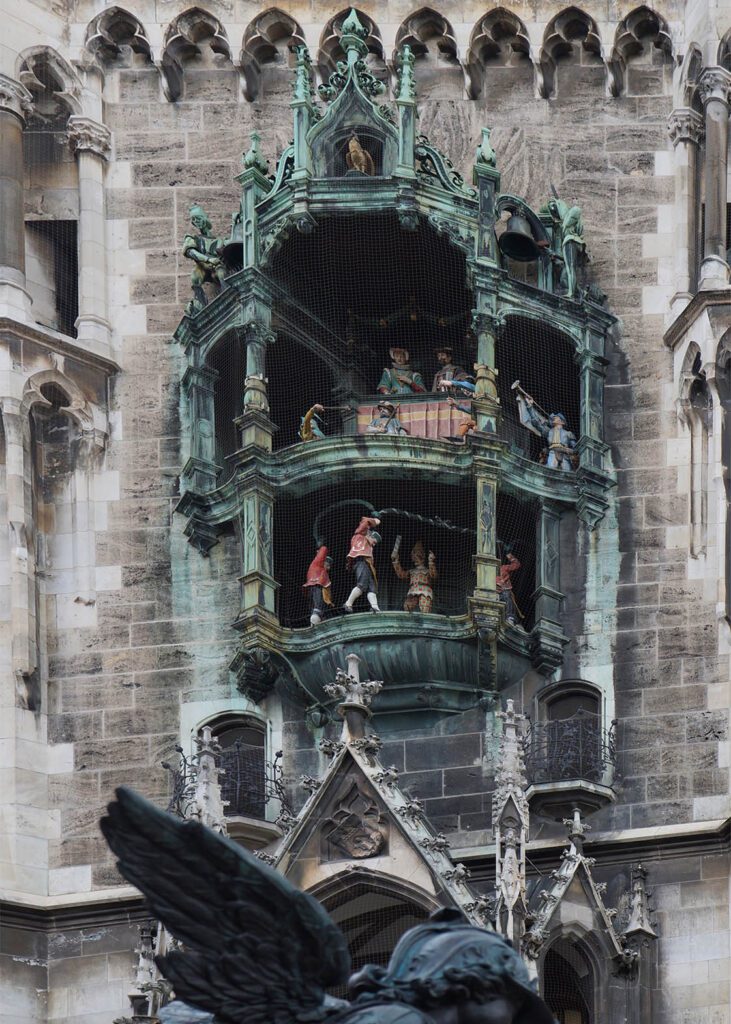
It’s the seat of the mayor, the city council, and the municipality, but the most alluring part is the Glockenspiel, the carillon. Every day at 11 a.m. and noon – and from March till October also at 5 p.m. – two important historic incidents are shown: The upper one depicts the wedding of Duke William V. with Renate of Lorraine, on the lower level, coopers, just recovered from the plague, are entertaining the people with their dances.
High-Class Shopping
Next to the town hall, you’ll spot Ludwig Beck, another very traditional and posh department store, and next to it is the old town hall from the late 15th century that today houses the i. a. the Toy Museum. It’s packed with everything children used to love – all the way back to 1800.

(Photo: © Pierre André, München, Altes Rathaus von Marienplatz (2016, cropped to 7:5, CC BY-SA 4.0)
Definitely not to be missed when you are visiting with kids!
Spielzeugmuseum
Marienplatz 15
80331 München
Phone: + 49 – 89 – 29 40 01
I guess you’re hungry now, aren’t you? Perfect: The Viktualienmarkt, Munich’s famous farmers market, is right behind the old town hall.
 Morning Activities
Morning Activities
Is it raining? Good for you, since Munich has not only a high number of first-rate museums, there are also churches and, most of all, the Residenz to be visited. And in all honesty, the hearty’n’heavy Bavarian food tastes much better as the clouds are out.
The Residenz is the former royal palace of the Wittelsbach monarchs of Bavaria, and it’s the largest city palace in Germany.

It consists of several buildings, of whereby the most important is the one housing the Residence Museum with the adjacent Treasury and the Cuvillier Theatre.
This complex is perfect for a rainy morning since there is so much to see.
Apartments and Galleries
Entering the glamorous State Apartments after crossing the Ancestral Gallery, the vast collection of paintings at the Green Gallery.

The quirky grotto and, of course, the stunning Antiquarium, not to mention the slightly creepy collection of reliquaries, and sacred relics such as bones and skulls – like I said, slightly creepy. In the other wing is the incredible treasury, and then there is the theatre to be visited. With so much to see, it might as well rain until September, right?!
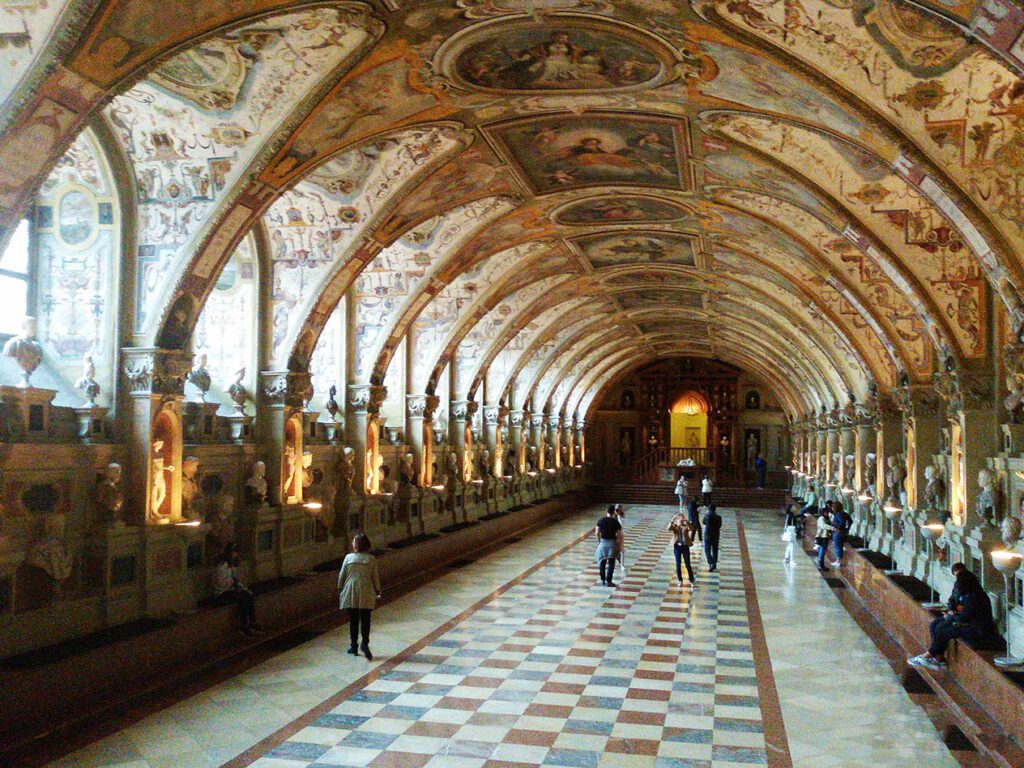
Residenzmuseum
Residenzstraße 1
80539 München
Phone: +49 – 89 – 17 90 83 11
The museum is open every day from 9 a.m. to 6 p.m.
For a good Bavarian lunch at the Viktualienmarkt, just hop on subway #6 at Odeonsplatz and get off at Marienplatz.
 Lunch
Lunch
The Vikutalienmarkt is not just some humble market, no, it consists of about 140 stalls and shops offering everything you need to be fresh and savory.

folks.
(Photo: BeAr, Viktualienmarkt Maibaum
Nahaufnahme 1999, cropped to 7,5:5, CC BY-SA 3.0)
They sell fruits and vegetables, meat and fish, cold cuts and cheese, herbs and spices, beer and wine. Also, there are some really good eateries, international and regional alike. Actually, there is no place as colorful, vivid, and original as the Viktualienmarkt to get in touch with the inhabitants of Munich. Hence, on a Summer day, you absolutely have to visit the Biergarten:
Biergarten am Viktualienmarkt
Viktualienmarkt 9
80331 München
Open Monday to Saturday 9 a.m. to 10 p.m.
Outdoor (S)eating
If there’s a nip in the air, Elisabeth Teltschick will heat you up with the best sausages and other Bavarian delicacies in town:

(Photo: Lupus in Saxonia, +Vesper – Fleischkäs mit süßem
Senf und Brötchen – Bild 002,
cropped to 7,5:5, CC BY-SA 4.0
Wurstimbiss Teltschik
Viktualienmarkt 3V
80331 München
Open Tuesday to Friday 9 a.m. to 5 p.m. and Saturday 8 a.m. to 3 p.m.
 Afternoon Activities
Afternoon Activities
I presume you ate some pretty heavy stuff that you need to walk off?

So why not spend the afternoon walking? First walk East towards the river Isar. Once you reach the shore, turn left and walk the trail next to the Steinsdorfstraße up North. At Prinzregentenstraße – there is also a bridge, so you actually cannot miss it – turn left and you’ll get to the Englischer Garten, Munich’s central park and strongest suit when it comes to leisure. It is one of the world’s largest city parks, and there is an incredible variety of activities: Besides the classics like hiking and cycling, people actually surf on some of the creeks.
Englischer Garten – Munich’s Green Oasis
There are creeks and lakes where all sorts of wildlife are frolicking while humans are frolicking at one of the beer gardens – the nicest one right next to the iconic Chinese Tower, built in the late 18th century after the Great Pagoda in Kew Gardens.

(Photo: Richardelainechambers, SurfingInTheEnglishGardenMunich,
CC BY-SA 3.0)
Oh, by the way, here is why it’s called Englischer Garten, English Garden. And, as a matter of fact, many of the landscape architects designing this greenery were actually English. So yes, I’m sure on a warm day, the Englischer Garten will keep you quite busy for a while.
Now it’s a bit difficult to guide you back to the hotel since I don’t know where you’ll end up at the park.
If you are at the beer garden at the Chinese Tower, walk to the tram stop Tivolistraße and take #36 towards Isartor and get off there.
Now it’s a short walk to the Hofbräuhaus, where you’ll have dinner.
 Afternoon Activities
Afternoon Activities
As already mentioned above, there are many fantastic museums in Munich housing wonderful steady collections as well as amazing changing exhibitions.
To make it easy for the visitor, about a dozen museums are located between subway stops Königsplatz and Universität. Even an art maniac like myself cannot see more than two in one afternoon – they are big and beautiful.
The best way to get there from the Viktualienmarkt is to take subway #3 or #6 from Marienplatz to Odenplatz. From there, you can continue by bus #100 in the direction of Hauptbahnhof to the stop Pinakotheken.
However, I recommend my favorite five so you can choose. Also, if you intend to visit various of these houses, make sure to ask for the combo-tickets, this way you’ll save a little money.
Oh, and one more thing: On Sundays, to public museums, such as the Pinacotecas, entrance is 1 €uro. Yes: one!
1. Neue Pinakothek
It houses a truly wonderful collection from the 18th but mostly the 19th century.
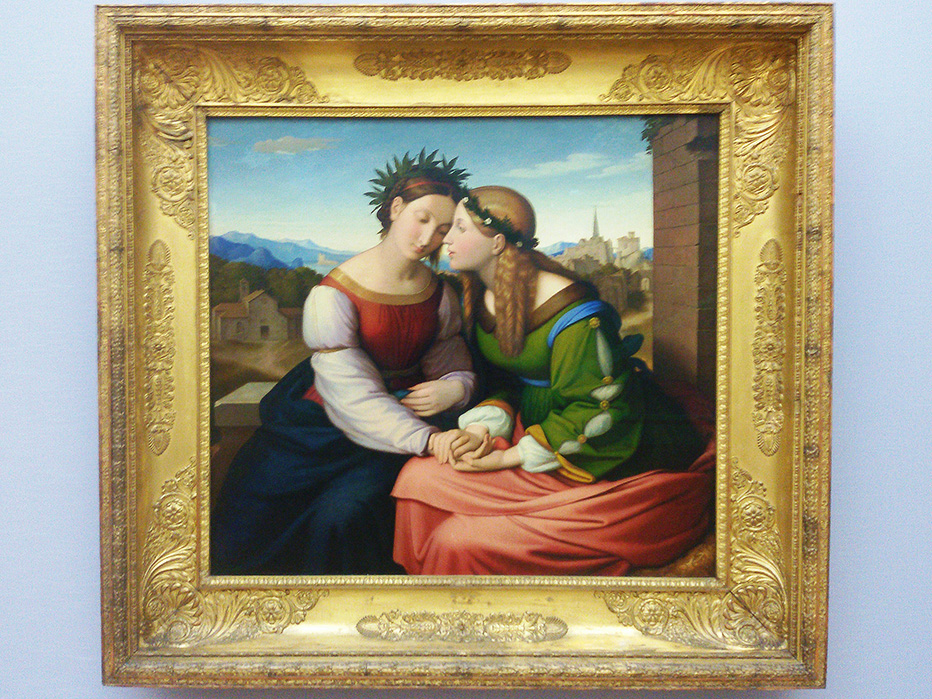
My favorites are the German artists who were fascinated and strongly influenced by Italian art and culture, especially after Goethe’s journey to Italy.
But there are also the French Impressionists, the British Classicists, the Symbolists, and many more; it’s my Art Dorado!
Consequently, if I had to choose, the Neue Pinakothek, the new pinacotheca, would be my number one.
Neue Pinakothek
Barer Straße 29
80799 München
The museum is open from Wednesday to Monday, 10 a.m. to 6 p.m., Wednesday to 8 p.m.)
2. Pinakothek der Moderne
Second would be the Pinakothek der Moderne, the pinacotheca of modernism.
Here, you don’t find only modern paintings and sculptures from the 20th and 21st centuries, but also a fantastic exhibition of arts and crafts and design.
As a matter of fact, at the Pinakothek der Moderne alone, you could spend many hours.
Pinakothek der Moderne
Barer Straße 40
80333 München
The museum is open from Tuesday to Sunday, 10 a.m. to 6 p.m., Thursday to 8 p.m.
3. Alte Pinakothek
The old pinacotheca is beyond doubt one of Germany’s most important museums.
Already, Dürer’s masterpieces make a visit worthwhile. But, of course, there are exhibits of German Gothic, Italian Renaissance, Spanish, and Flemish Baroque – everything a grand museum needs. Definitely the most important of the venues.
Alte Pinakothek
Barer Straße 27
80799 München
The museum is open from Tuesday to Sunday, 10 a.m. to 6 p.m., Tuesday to 8 p.m.
4. Lenbachhaus
I like the Lenbachhaus mainly for being such an unusual venue.
The villa was built in the late 19th century in a historistic style for the painter Franz von Lenbach.
Nonetheless, today, it is an art museum showing works by the members of the Blue Rider, like Paul Klee, and New Objectivity, like Christian Schad. The main focus, though, is on the world’s largest collection of paintings by Kandinsky.
Apart from modern art, there are also contemporary artists and changing temporary exhibitions on show.
Lenbachhaus
Luisenstraße 33
80333 München
The museum is open from Tuesday to Sunday, 10 a.m. to 6 p.m., Tuesday to 8 p.m.
5. Glyptothek
It was in Rome that I got a thing for sculpture and statues – the Musei Capitolini left me no choice, the exhibits were just too beautiful.
So I also enjoy the fine choice of classical sculptures that King Ludwig I collected.
After all this culture, let’s get back to food and beer: You need to visit the Hofbräuhaus, the huge, beyond-rustic restaurant with original brass music and beer glasses that you can barely hold with both hands.
Glyptothek
Königsplatz 3
80333 München
The museum is open from Tuesday to Sunday, 10 a.m. to 5 p.m., Thursday to 8 p.m.
Walk to the subway station Universität and hop on subway #6 towards Klinikum Großhadern. Get off at Marienplatz, from there it’s less than 5 minutes to the Hofbräuhaus.
 Dinner
Dinner
The Hofbräuhaus, Munich’s pride, was founded in 1589 by Duke Wilhelm V. Interestingly, to this date, it is owned by the Bavarian state government.
The main dish is certainly beer, but they also bring you side dishes such as pork knuckles, pork roast, and sausages, all served with dumplings and cabbage.
It’s really good – and most of all, the whole atmosphere is like scripted, full of Bavaria-clichés; not to be missed, so to speak.
Also, they have a gift shop where you can buy all these quirky Bavarian things with the Hofbräuhaus-Logo on them.
Hofbräuhaus München
Platzl 9
80331 München
The Hofbräuhaus is open every day from 9 a.m. to 11.30 p.m.
 Nightcap
Nightcap
At the Hofbräuhaus, you are seated at long wooden tables.

(Photo: Berlinuno, Munich Hofbräuhaus beer, CC BY-SA 4.0
Hence, I’m pretty sure by now you’ve made some new friends – from Tokyo, Chicago, or maybe even from Munich – so just order another beer and listen to the brass band playing songs that would put the Trapp family to shame.
 Accommodation
Accommodation
Especially if you are on a layover and need to get back to the airport in the early morning, staying close to the main station is crucial. Unfortunately, as in most German cities, the neighborhood around the train station is a bit sketchy. Another fact is that lodging in Munich is pretty pricey.
However, there are two Cocoon Hotels close to the main station: Hauptbahnhof* and Stachus*. They offer a good standard, a very trendy design, and a laid-back atmosphere for around 100 €uros per night.
Nevertheless, you can search for other convenient accommodation on this map*:
Map
This map should help you to easily find all the wonderful places I’m introducing in this post. To switch between the itineraries for a sunny and a rainy day, just open the legend at the top left corner, and you can hide or unhide the respective layer as you wish. This way, the map will show only the section you really need and be clearer.
Pinnable Pictures
Like this guide? Pin it for later – using one of these pictures, please:



Note: I’m completing, editing, and updating this post regularly – last in July 2025.
Did You Enjoy This Post? Then You Might Also Like These:
Guide to the Island of BORKUM – West of East Frisia
BREMEN – BIG and small. A complete city guide.
Guide to POTSDAM – how Frederick made a small town great
We’ll Always Have Büdelsdorf – bye:myself at the NordArt 2017
How to Visit the NordArt in 2023
Guide to DUSSELDORF, the Self-Proclaimed Longest Bar in the World
24 hours in BERLIN
ISLAND HOPPING in GERMANY
* This is an affiliate link. If you book through this page, not only do you get the best deal, I also get a small commission that helps me run this blog. Thank you so much for supporting me!
Icons: money bag by Roundicons from www.flaticon.com, police car, train, sun, glass, and bed by Freepik from www.flaticon.com, takeoff plane and board made by ultimatearm from www.flaticon.com, info made by Roundicons from www.flaticon.com, umbrella made by Kiranshastry from www.flaticon.com, food plate by Vectors Market from www.flaticon.com




